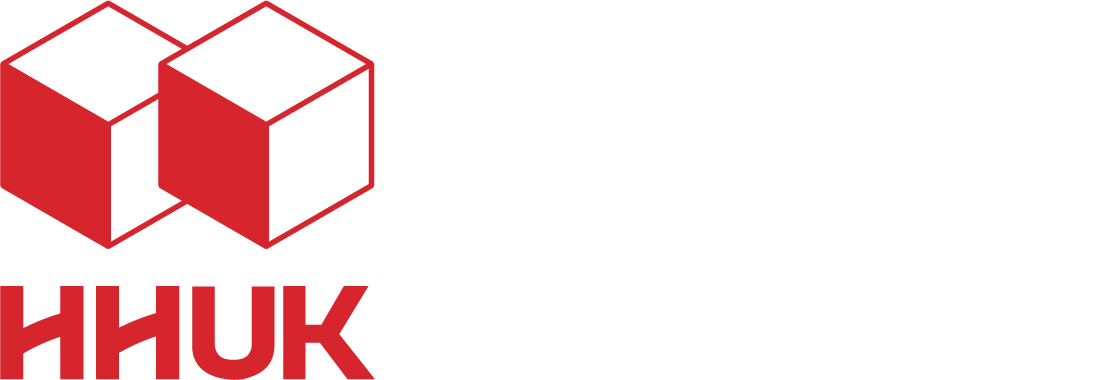This Glossary provides a brief description of the many popular printing and finishing techniques used by Hung Hing. Use the menu to jump straight to a section, or scroll down to browse through the tabs.
For more information, or to add a new section, email the site administrator here
Varnish & Lamination
Varnishes are applied on press to give the page a smooth and consistent texture as well as having the added benefit of sealing and preserving the printed material.
Lamination is the process of gluing a thin transparent acetate or polypropylene film onto the paper surface.
Aqueous Varnish is a clear, fast-drying water-based coating usually applied in-line. This can be applied as an overall coating or as a spot coating. The varnish helps to protect the colours while providing good protection from fingerprints and other blemishes. Aqueous coatings are fast drying and effectively seal the inks from exposure to the air.
UV Varnishes are especially formulated varnishes applied on top of a printed product and cured with Ultra Violet light. This process enhances the visual effect of the printed material with a high gloss, hard, protective finish for instant impact.
A Matte Varnish protects the printed sheet with a non-reflective coating. It can provide a lush, tactile quality to the paper surface. Matt Varnish is more resistant to fingerprints than a gloss varnish.
Spot UV Varnish is a high gloss varnish applied by silk screen printing to specific areas of the printed sheet. The varnish is cured by UV light creating a durable high gloss finish, added texture and contrast especially on a matt laminated sheet.
Raised Varnish is A method of applying a much heavier deposit of varnish than a standard Spot UV varnish to give the impression of an embossed finish. A thicker coating is applied to raise the varnished area and bring it to the attention of the reader.
Sand Varnish is a textured version of a Spot UV varnish which brings a more tactile property to the finished job. Like a Spot UV Varnish, this is applied using the silk screen printing method.
Soft Touch Varnish creates a velvety texture where the paper becomes “soft” to the touch, increasing it’s tactile appeal. Darker color palettes will appear more muted and sophisticated. Soft Touch coating is applied in-line as a part of the printing process and assists with a quick drying time, while protecting the sheet from scuff marks during finishing operations.
Gloss lamination will give your job an overall glossy appearance. Images will appear to have more contrast and better sharpness. Lamination can also prevent paper from becoming creased, wrinkled or marked, and Gloss Lamination produces a bright, colour enhanced finish.
Matt lamination will give your job a non-reflective finish and is smooth to the touch. Lamination can also prevent paper from becoming creased or wrinkled.
Scratch-Free Lamination protects your work from finger marks and scratching. This process gives a great matt finish to the printed job, while providing a longer lifespan than standard matt lamination.
Soft Touch Lamination has the appearance of matt lamination with a soft, velvety and sophisticated feel.
Foil Lamination: These eye-catching coloured foils add an interesting layer of decoration to your printed images. They come in many forms including clear, patterned, holographic and pearlescent.
Orange Peel UV is a Spot Varnish applied to specific areas of the printed job to create a textured, bumpy feel similar to that of orange peel.
Bio Lamination adds a durable coating to your printed work using bio-degradable materials. This technique protects the finished job without harming the environment.
Emboss, Deboss & Foiling
Embossing is the process of applying pressure to a paper, fabric or other material to create a three dimensional or raised effect. The procedure involves the use of two die moulds, one fitting into the other, with the raised die forcing the stock into the recessed die to create an embossed impression.
Debossing is the reverse of Embossing, where pressure is applied to the front of a job to push the highlighted areas down into the paper, board or other material. The procedure involves the use of two die moulds, one fitting into the other, with the raised die forcing the stock into the recessed die to create a debossed impression.
Blind Embossing refers to the technique of Embossing when there is no requirement for the die to register with a printed image.
Foiling is achieved by pressing a chosen colour of foil into an image area using a pre-formed die (or block). Foils are available in many metallic and coloured opaque finishes, and add an extra touch of luxury to the printed job.
Multi-Layer Embossing uses the same techniques as standard embossing, building up more layers for an increased 3-D effect.
Braille Embossing is the process of raising dots on the printed page to represent the letters of the international Braille alphabet, meeting the required guidelines for height and letter spacing.
Holographic Foil is a material carrying a holographic pattern. Many patterns are available, and they are applied by using a die to press into the printed material.
Pearl Foil is a material with a pearlescent effect, applied by using a die to press into the printed material.
Transparent Foil is applied with a pre-formed die (or block), but unlike a standard foil it allows the printed image to show through.
Matt Foil is applied by using a die to press into the printed material, leaving the chosen Matt Foil on top of the printed image in the impacted areas.
Neon Foil is applied by using a die to press into the printed material, leaving the chosen Neon Foil on top of the printed image in the impacted areas.
Special Inks
Most print process involve CMYK, the process colours. Special Inks can be used instead of, or in addition to, the normal process colours to create interesting effects.
Fluorescent Ink contains pigments which absorb ultraviolet energy, invisible to the human eye, then transmit the light as longer waves in the visible spectrum. Cyan, Magenta, and Yellow process inks can be replaced with their fluorescent equivalents for a creative, semi-natural look.
Scratch Off Ink is a solvent based, high opacity security printing ink used to conceal underlying data or messages. The ink is applied by silk screen printing and is normally used for commercial games, direct mail or to add novelty to children’s products.
Scratch & Sniff Inks are fragrances mixed with a UV scratch-off material used to create a coating in a printed area. The coating is applied by Silk Screen Printing and, once dried, scratching the surface will rupture the microcapsules releasing the scent beneath.
Glow in The Dark Inks contain phosphor elements and are applied by silk screen printing. The phosphour elements begin to emit a visible light when the material is placed in the dark. This effect is enhanced when the sheet is first left to absorb light for 10 to 20 minutes.
Paint Palette Inks are applied using the silk screen process. Once dried, the ink can be used as a paint pallet by adding a small amount of water which dilutes the ink for painting onto paper.
Water Reactive Inks are applied by silk screen printing. When water is applied the image area below the reactive ink is revealed. White is the most common colour for water-reactive ink, but yellow, red, blue, green, brown and black are also available
Puff ink is created by adding a raw material called a blowing agent to the ink. The ink is dried at a very high temperature and expands upwards and outwards to produce an embossed effect.
Conductive Ink is used to print circuit boards onto paper. Conductive silver ink can be used to improvise or repair circuits and the same technique can work on various materials, including paper and board.
Chalkboard Inks are applied by silk screen printing. The ink can be written on with chalk, which can be wiped clean, much the same as a traditional chalk board.
Thermal Inks are activated at a certain temperature. At set temperatures, colors will appear and disappear. This technique is often used for example in bottle labeling, where a message is revealed when the bottle is refrigerated.
Flocking is produced by Silk Screening a glue to a desired image area which is then electrostatically charged. The flock is attracted to the charged glued areas. When removed from the charge, the flock remains in place.
Plush Flocking is produced by Silk Screening a glue to a desired image area which is then electrostatically charged. A plush fibre flock is attracted to the charged glued areas. When removed from the charge, the flock remains in place.
Loose Glitter is also known as Flitter. A glue area is silk-screen printed to a sheet, and loose glitter is shaken by hand onto the glued areas.
Labour Intensive Techniques
Many special techniques can only be applied by hand. A vast team of hand finishers use various methods to apply finishes to individual printed products.
Die Cutting is the process of cutting a designed shape into a sheet using a metal cutting blade mounted into a strong backing board (or die). The blades can cut through the sheet, or be set just to crease if required.
The term pop-up book is often applied to any three-dimensional or movable book. Pop ups include flaps, pull-tabs, pop-outs, pull-downs, and more. Design and creation of POp Ups is referred to as Paper Engineering.
Laser cutting is a technology that uses a laser to cut materials. It works by directing the output of a high-power laser to follow a computer generated guide. Laser Cutting can achieve very detailed cuts which might be too fine for a traditional die cutting method.
Touch and Feel refers to the addition of tactile components to a finished material. For example; Ribbon, Lace, Beads, Buttons and Sequins.
Some finishes are only possible by folding, gluing or manipulating the printed materials by hand. Experience print hand-finishers manipulate the materials to achieve the desired results.
Other Techniques
There are various other techniques used by Hung Hing to produce materials to our clients’ specification. A selection are outlined in this section.
Lenticular printing is a multi-step process combining at least two images to give the effect of animation. Each image is cut into strips, interlaced with the rest of the images, then printed onto a thin plastic base. A series of long fine lenses are moulded into the plastic, with each lens angled to refract light from it’s corresponding image.
Morph Effect Lenticular printing is a multi-step process combining at least two images to give the effect of animation. Each image is cut into strips, interlaced with the rest of the images, then printed onto a thin plastic base. A series of long fine lenses are moulded into the plastic, with each lens angled to refract light from it’s corresponding image.
3D Effect Lenticular Printing is a multi-step process combining frames of the same image to create depth on a normally flat surface. Each image frame is cut into strips, interlaced with the rest of the frames, then printed onto a thin plastic base. A series of long fine lenses are moulded into the plastic, with each lens angled to refract light from it’s corresponding image.

